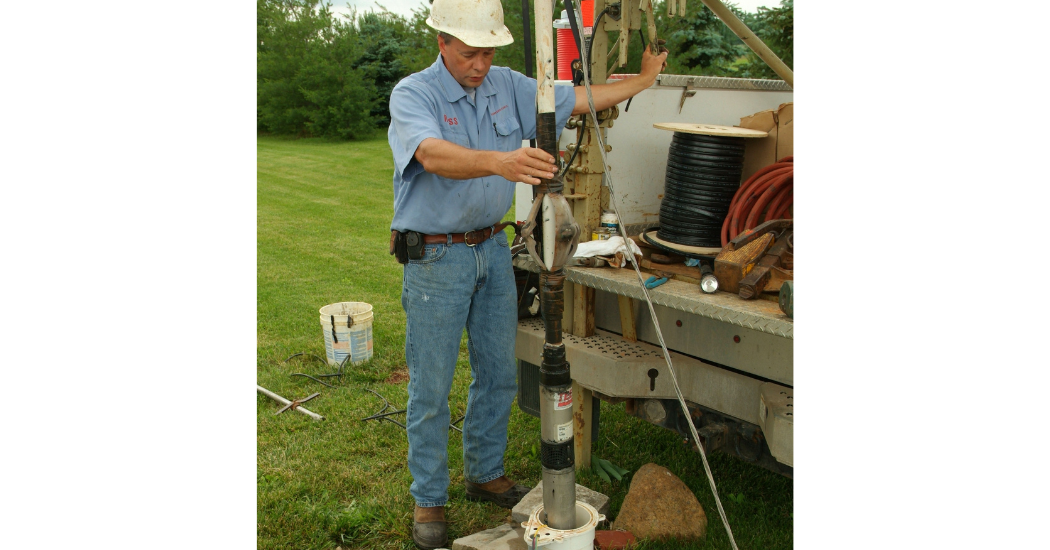It has been over three years since the U.S. Department of Energy (DOE) created a regulation for improving the overall electrical consumption for a variety of water pumps.
On January 27, 2020, the regulation went into effect and the goal was to eliminate the most consumptive twenty-five percent of pumps in a variety of classes. The DOE said the benefit of doing so was the reduction of CO2 gas, energy cost savings for customers, and utility rebates for participating customers.
The CO2 reduction is said to be the equivalent to the annual electricity consumption of 370,000 homes by 2030.
So, how is the groundwater industry doing? Admittedly, there was some work that had to be done in those early days. But energy-efficient products are on the market, more are on the way, and some of the least efficient pumps are no longer offered or have been redesigned.
To find out more detail on exactly how pump manufacturers are doing, Water Well Journal conducted a roundtable discussion on the subject with experts from three manufacturers.
WWJ caught up with Steve Doggett, the global business development manager – groundwater for Grundfos; with Jeff Frank, a global product manager for Franklin Electric; and Paul Ruzicka, the chief engineer for residential, commercial and wastewater for Xylem Inc.
 Doggett brings a well-rounded background to the conversation. Along with working for Grundfos, he has worked for two pump distributors, and owned a water well drilling and pump installation business.
Doggett brings a well-rounded background to the conversation. Along with working for Grundfos, he has worked for two pump distributors, and owned a water well drilling and pump installation business.
Frank has 15 years of experience in the water systems industry and has helped facilitate product innovations by sponsoring and supporting the launch of many of Franklin Electric’s popular water pump product lines.
Ruzicka has been in the pump engineering business for more than 46 years and leads the engineering and product development team for residential, commercial and wastewater products for Xylem.
Below is WWJ ’s insightful discussion with the three expert industry professionals.
Water Well Journal: How do you think the pump and motor market has changed since the DOE regulation went into effect?
Paul Ruzicka: Pump manufacturers had to phase out, add drives, or redesign products to meet the DOE compliance. Many manufacturers have revised their literature to reflect more conservative performance in accordance with the DOE’s new minimum efficiency standards.Motor manufacturers have looked to increase motor effi-ciencies, now offering what used to be NEMA Super Premium Efficiency as the new standard. They also have advanced more synchronous motor technology—motors that run at full 3600 and 1800 RPM. These are frequently permanent magnet motors and incorporate a drive as part of the motor.
Jeff Frank: Although this regulation was a monumental change to product efficiency expectations for many of the pumps used in the industry, the implementation has been nearly seamless. This is a credit to the combined efforts of product manufacturers. Certain models were phased out or upgraded to meet the DOE requirements. New products have also been released as a result.
Steve Doggett: I would say that most major pump/motor manufacturers are always working to improve efficiencies. The DOE regulation puts efficiency on the forefront and has forced the old inefficient pumps to be retired. We should all agree that this is not only the right thing for the future but also it is our responsibility as an industry to do our part.One very important fact to be established as we move for-ward is to make sure DOE and the Hydraulic Institute both use subject matter experts from the pump industry to establish proper testing and future requirements—like a pump/motor and controls coalition to work hand in hand with the DOE and the Hydraulic Institute.
WWJ: Are you seeing more energy-efficient products on the market? Is your company planning to have more efficient products in the field soon?
Doggett: We are seeing more inefficient pumps not in the market. We are seeing those pumps either replaced with new, more efficient pumps or they have design changes that im-prove their efficiency. Either way, overall, we are seeing more efficient pumps going into the market, which is a good thing. At Grundfos, we are releasing more efficient products one after another. This not only cuts down on the carbon footprint but really improves cost of ownership for our customers. It is doing the right thing for the environment and money in the bank.
Ruzicka: Yes, the pump industry has responded, and through the DOE regulation, the lower performing 25% of pumps were eliminated. Essentially, these pumps were redesigned to improve their efficiency or fitted with drives and motors to enable compliance. Xylem continues a push to improve its pump efficiencies. The goal is to provide products that are eligible to receive potential utility rebates for our customers.
Frank: The industry has continued to take steps forward regarding pump efficiency. This is also true at Franklin Electric. We’re mindful that moving water takes tremendous power, so we need to continue to drive innovation beyond the pump. The use of permanent magnet motor technology is one example; it’s an area where we see the potential for future efficiency gains.
WWJ: What have you seen as the biggest innovation in motor design that has come as a result of the DOE regulation?
Frank: Water systems are evolving to take advantage of permanent magnet motor designs that had become popular in other industries. Running these in certain applications can provide energy savings that quickly offset additional initial investment costs. We’ve found that our motors with a 90% efficiency rating provide an investment payback of less than two years in most long- or continuous-run applications.
Doggett: The biggest innovation in motors would probably be the move to permanent magnet motors for above-ground pumps and below-ground submersible pump motors. Many manufacturers have been working on these more efficient de-signs before DOE. However, I will say DOE has moved more manufacturers into high gear as far as speed to market.
Ruzicka: High-efficiency motors used to depend upon rare earth, high-energy magnets that were both expensive and in limited supply. New technology and evolution in motor design have enabled high motor efficiencies without the use of ex-pensive rare-earth magnets.
WWJ: Do you get questions from contractors about the Pump Energy Index? Do you think there has been a learning curve regarding it?
Ruzicka: Yes, contractors ask questions as to the meaning of the PEI value and how they can interpret it for their customers. They are becoming interested in offering their customers products that are sustainable and can reduce the cost of ownership, the largest being around energy consumption. Like all new metrics and regulations, there was a learning curve. Now that this regulation has been in effect for two years and a large amount of educational literature provided by the industry, including articles published by trade magazines, the government, and associations such as the Hydraulic Institute, AWWA, and many others, the mystery around “what is PEI?” is fading.
Doggett: It has brought end-user and distributor attention to what the program is about as far as older inefficient pumps not being available anymore. I do not know that (contractors) understand the “index” part, but they do understand better efficiency. It has all heightened the awareness of the importance of efficiency in the market through the entire value chain—from manufacturing to the end user.
Frank: Whether a submersible or a surface pumping system, these products are designed to meet the regulations. We communicate that clearly, so contractors know they’re covered from a PEI standpoint. What installing contractors consider as primary requirements are a pump’s specific head and flow. Performance is still the main factor in selecting a pump.
WWJ: As more energy-efficient pumps and motors enter the groundwater industry, what do you think the next step is?
Doggett: This may seem far-fetched, but a true next step is to put stricter regulations on the power companies and power providers. We can create the most efficient pumps/motors in the world, but power suppliers’ bad power is out there working against our efforts. This is, and will be, a challenge and is just as important as increasing pump efficiencies. Roughly 10% of the world’s electricity consumption is from electrical pumps. This could be reduced to about one-half if replaced with today’s most efficient pumps.
Frank: Turnkey systems, including variable frequency drives, will be an important method for pushing efficient product design. When the pump-motor assembly and VFD are designed and built together, they work together more effectively. Maximum efficiency is engineered into the entire system. This benefits contractors not only in terms of energy cost savings but also ease of installation and streamlined maintenance.
Ruzicka: The next step in the pumps and motors industry would be to incorporate additional intelligence into the motor/drive/pump system to provide insight as to system conditions, pump operating point, and reliability parameters such as vibration, temperature, and energy consumption.
WWJ: Has the global materials shortage and supply chain issues impacted the design and manufacturing of pumps and motors? If so, how so?
Frank: Supply chain disruptions have impacted manufacturing somewhat, but not the basic elements of pump design. We’ve been working hard to stay ahead of any supply manufacturing challenges by making strong investments in raw materials. This has helped us mitigate some potential shortages. We’ve also been helping customers identify available alternatives that provide an application-based solution and minimize disruptions.
Ruzicka: The push to develop higher-efficiency pumps has had its challenges due to materials and supply chain issues in obtaining newly designed pump components, electronics for drives, and new intelligent products. Sourcing, material shortages, and supply chain issues have created large disruptions felt by manufacturers of all products today, resulting in the need to become more creative and flexible in new and existing product design.
Doggett: I do not think we have lost any major progress in design and speed to market as I too am involved with many projects, but we without a doubt are spending a lot of energy on making sure our customers have product. Personally, I haven’t seen a design change due to the material shortage crisis. …I think that’s an interesting thought and one I believe will need to be addressed by our design groups. I will say that manufacturing in general is transforming to what I call the new normal. Hence, I believe the supply chain topic will remain for some time in the future.
Thad Plumley is the editor of Water Well Journal and director of publications at the National Ground Water Association. He can be reached at tplumley@ngwa.org.
Originally Published in Water Well Journal




